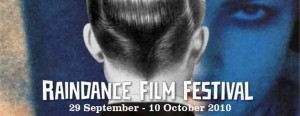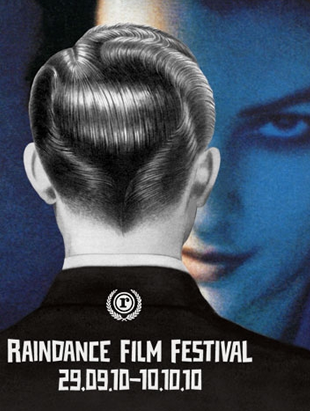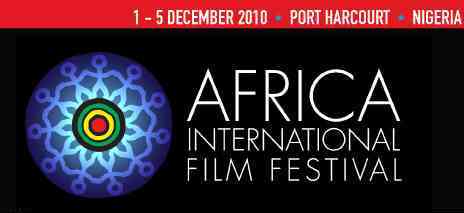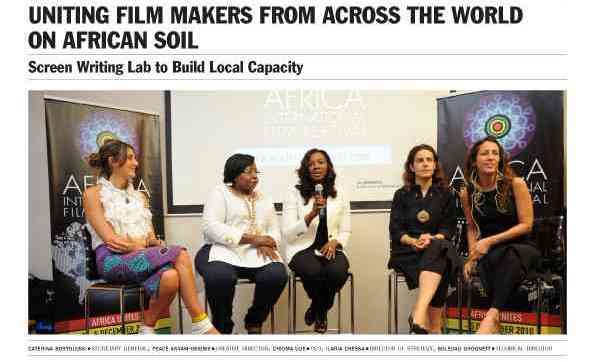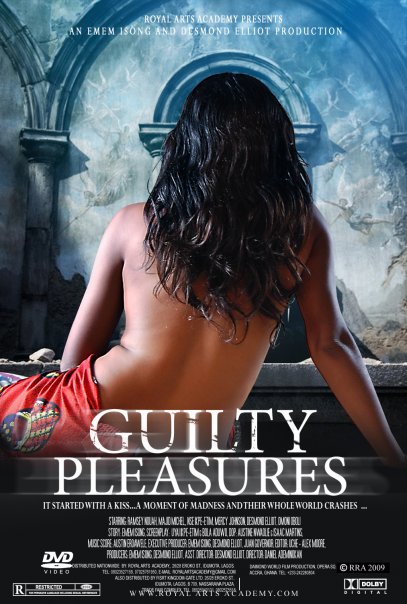
The Future of Film Distribution in Nigeria_ a paper presented by Femi Odugbemi, Managing Director/CEO, Dvwork Studios, Lagos, and past president, Independent Television Producers Association of Nigeria (ITPAN) at the 4th Festival of Indigenous Language Films held at Owena Hotel, Akure in Ondo State on October 5, 2010.
It is with great pleasure that I welcome the opportunity to share thoughts and ideas with this distinguished gathering. More so, in a time that our industry is in need of creative intelligence to take us to the next level of growth.
BACKGROUND
Home video production in Nigeria grew out of what was a perfect storm of need and circumstance. A confluence of emerging technology, audience-need and out-of-the-box thinking. At the heart of Nollywood’s emergence was innovation. Pioneer producers found a need and invented a creative solution based on new technologies available to them at the time.
It should be said that the timing was also just right;
•economic downturn had played early generation of cinema producers out of business,
•the monopoly of public television was not catering for the diverse interests of its audience,
•socio-economic problems were on the rise, seriously affecting the cinema-going culture.
Yet there was a large audience with massive hunger for local content. The popularity of the video technology at about the same time set the stage for what is to be known as Nollywood. That the video technology simplified the process of filmmaking, coupled with the availability of video cassettes allowed many people to join the trade, creating a new army of storytellers – Writers, Producers, Directors, Production designers and technical support professionals behind the camera and actors and performers who will go on to become international stars.
here was a need, there was an enabling environment, there was a technology, there were people with creative ideas and an “industry” was born.
The pattern of production and distribution soon became overly driven by desperate moves for marginal profit, without a structured, systematic distribution framework that can be sustained and verified.
Two decades down the line, that pattern has not changed much, yet, there is so much expectation with regard to the economic potential of the industry. Worse still, the major players in the industry have become fairly comfortable with the “success” of the industry; BUT the technology that brought about the breakthrough has moved on and frankly everyone seems to have been largely caught unawares. This in my humble opinion, is the crux of Nollywood’s underdevelopment.
Understanding that it is in distribution that the craft of filmmaking becomes a business, it is imperative that this phase of film production be taken with utmost seriousness. That countries like South-Africa enjoy more returns with fewer titles than a nation like ours, with over 1,000 film titles credited to our industry annually, and a massive audience base within and outside the country, is an indication that something is fundamentally wrong with our approach. If we accept the foregoing premise, then, it is important that we broker a discourse on finding the right approach and entrenching it into our system.
The challenge of sustaining the industry now, like at its inception, is to find creative solutions and innovative ideas that can break new grounds to enable Nollywood be competitive internationally. Nollywood cannot afford to break ties with technology, particularly in this age of New Media and digital technology.
SO WHAT IS WRONG WITH DISTRIBUTION IN NIGERIA?
To understand the future, it is useful to interrogate the past. Therefore we should begin by asking the question: what is wrong with distribution in Nigeria?
In most other creative economies, a film’s commercial life span starts normally with a box office or cinema release, then it moves on to video release, broadcast on pay-television, broadcast on public television, and finally on other ancillary media (i.e. video games, cartoons etc.) and merchandising. This is the typical marketing chain of the major film studios in the UK, USA, India and even South Africa nearby. They normally also have the huge budgets to finance and distribute blockbusters. With the introduction of video technology came the glut – the proliferation of film titles in such quantity that was much more than the traditional distribution system could handle. Consequently, independent filmmakers started to explore new opportunities causing a major shift in Hollywood’s distribution chain.
The introduction of digital video technology and its attendant success and acceptance globally opened a new world of opportunities for filmmaking and its professionals alike. Currently, major studios in Hollywood are adjusting their distribution pattern to accommodate the video technology phenomenon – In 2004, studios’ revenue from DVD alone was put at $20.9 billion dollars compared to $7.4 billion dollars from theatres in the same year. Today, it is standard marketing strategy to use theatrical screening as a launching pad for DVD release. Infact theatrically successful films account for about 80% of video store rentals. Many independent filmmakers bypass the cinema all together with straight-to-DVD release, as is the case with Nollywood, and they have very high profit ratio.
The question then is this: Why is Nollywood which is entirely a pioneer offshoot of video technology, still fumbling with the economics of the industry some 20 years down the line?
Leke Alder of Alder Consulting estimates that the total market potential of Nollywood, relative to the size of the economy is about N522 billion. The National Film and Video Censors Board (NFVCB) designed a distribution framework that should also help to actualize this potential. But the NFVCB distribution policy will only work if taken as a challenge to content producers and not as a sales strategy. Why? Because current international market realities are proving to us that distribution is a holistic phenomenon and all its facets must be understood and applied appropriately. The audience does not buy a film just because it is available or well distributed.
In my view, there are 2 key variables that will drive the workings of a successful film distribution paradigm in the immediate future – they are CONTENT /AUDIENCE CONNECTION and NEW MEDIA DELIVERY PLATFORMS. I’d like to discuss both with a view to how our industry must reshape itself going forward.
1. CONTENT/AUDIENCE CONNECTION:
Over the years, the Nigerian film industry has witnessed enormous Audience-Content misfit, and the result has continuously frustrated marketing strategies and distribution policy. Content must connect with audience for distribution to have a chance of success.
How do you create content that connect with the audience? Two quick case-studies will help our understanding.
‘Jenifa’ a film written and produced by Funke Akindele with a total budget of roughly N6Million+ enjoyed widespread popularity among audience, despite its technical hitches and quality. The subject-matter is in no way extraordinary, and the themes explored in the movie are commonplace and well-known to the audience. The distribution pattern was a continuation of the status-quo, everything was just ‘business as usual’, yet, the movie was one of the most popular Nollywood productions in 2008/09. Funke Akindele enjoyed an unprecedented career lift, with notable awards to show for it.
‘Kajola’ is an acclaimed outside-the-box Nollywood production, produced by Niyi Akinmolayan with a budget rumored to be over N100Million. It was a project that was aimed at changing the status-quo and giving our audiences a Hollywood-type experience of film production. The genre and execution were supposed to be first of its kind; Sci-fi, and loads of CGI. The packaging, hype and platform spoke volumes of the producers planning and ambition, yet, the movie didn’t do as well with the local audience.
Is ‘Jenifa’ a success? Yes! Would its audience have paid to see it in the cinema? Yes. Is ‘Jenifa’ of higher technical standard and execution than ‘Kajola’? NO!
The content that works in today’s age is one that is developed with the audience in mind and in conjunction with the audience. The success of content is heavily dependent on audience’s reaction to it, and creating content that is line with audience’s trends and expectations has become so difficult from any single location, and now requires producers directly engaging their potential audiences in environments where they can be found. As a result research becomes of utmost importance.
What a content producer knows or otherwise about his audience is very important to the success of distribution. It may as well be true to Nollywood that the mass market is dead. The Nollywood audience has over time been tremendously polarized into different segments, each with an expectation of its own and a quest for that expectation to be satisfied. Creating content without a clear understanding and definition of the segment of audience it is targeted at, is like deciding a destination without the faintest idea of how to get there. If your content is not connected to the lifestyle and ambitions of your audience, you lose.
Nollywood’s audience base is currently stratified into categories that may or may not be mutually exclusive. The primary audience consists of housewives, maids, the unemployed, etc. A secondary audience then evolved as a direct consequence of the MNET Africa Magic channel bringing the films into the living rooms of the educated and upwardly mobile. And of course there is the tertiary audience base which includes Nigerians and Africans across the continent and in the Diaspora. It is vital to understand that each of these audience segments have a thought pattern which are in most cases very different from one another. This thought pattern constitutes their worldviews (the biases, values, and mind-set that an individual audience brings to a viewing experience) and they affect the way the audience relates with the world around them, including your story.
Before your story gets to the audience, he or she already has an idea of what he or she wants to believe and if your story is framed to key into that worldview, such an individual believes and buys into it. If the story reaches a community of audience who share the same worldview, it enlarges its base; people pass the story on through word-of-mouth (which is still the most effective market strategy known to Man) and they make disciples of viewers for the films. No story succeeds if it cannot find an audience that already wants to believe in it – With over 1,000 titles averagely in Nollywood, our audiences cannot and will not see everything, they will pick and choose among the mass that compete for their attention. That choice will, however, be predicated on how well you fit your content into their worldviews.
Contents that are widely accepted are the ones that tell stories that are familiar to the worldview of the audience. This can be achieved through a variety of measures, most especially, foundational research that can help us to define the kind of story that we need to tell, the kind of characters that we need to help us live out that story, the type of audience that we need to be telling the story to, and the appropriate platforms to use in distributing the story. So why isJenifa a success? It arcs into the worldview of itsaudience and tells them a story they can believe and pass on.
Understanding your audience is one step in the process. Customizing your content to reflect their expectation is as important as understanding them. If you are unable to tack your content to somebody’s worldview, then, the content will be ignored. As a filmmaker, the first thing you have to reckon with in creating audience-centric content is, understanding that you maybe in charge BUT IT IS NOT ABOUT YOU!
IT IS ABOUT THE AUDIENCE and THEIR STORIES!
With the plenitude of titles in distribution regularly, audience can readily indulge their worldviews; ignoring content that does not reflect them. Aligning your story to the taste of your audience – particularly understanding that audiences don’t want to change their worldviews, they want it to be reinforced – will help you to ignite debates about issues that are most important to your audience. The lifestyle and aspirations of your on-screen characters can equally be suited to your audience, so that your content comes across as authentic, and the story’s integrity is preserved.
Just as well, you have to align the technical quality of your film to fit the quality that your audience is used to. It is not business-savvy, for example, to offer low quality film to an audience that is used to watching foreign content, which as a result of a more mature industry is of high quality production standard.
2. NEW MEDIA DELIVERY PLATFORMS
It is not enough to just create great content; the delivery platform is important as well. It turns out that, these days, audiences care about platform as much as they care about content. This philosophy is just as important when dealing with audience-centric content. Content platform in contemporary film world is not just a distribution medium, it goes into the heart of what film marketing is today. The platform allows you to present ideas to people in a way that embraces their worldview, not fight it.
Effective delivery involves choosing the right medium; bringing the content to the audience in their own world. With the massive market potential of Nollywood (within and outside the African continent), inappropriate platform will easily edge a filmmaker out of the competition.
The future of film distribution and marketing in Nigeria lies with the youth audience, almost exclusively. Producers must consciously build this demography of audience and meet them in their world. That world flourishes on the virtual fleet of the digital technology
At this point it will good to also examine promotion and distribution solutions that has helped to restructure other industries and could, therefore, be replicated in the Nigerian film industry. Film is a brand, and like every other brand, promotion and distribution is of singular importance. The edge that will eventually stratify winners from losers is creativity and innovation. This almost entirely borders on smart execution of promotion, advertising and awareness campaigns.
Currently Nigeria has the highest internet population in Africa, with almost a third of its population connected to the internet. The International Telecommunications Union (ITU) puts the total number of internet users in Nigeria at 43.9 million, accounting for 39.6% of internet traffic in Africa. That is, in no small measure, massive. The innovation that individual film producers can bring into this pool of internet population is what will set them apart.
The core advantage that the internet provides for filmmaking is helping to create a community of followership, and therein lies, arguably, the most essential element of any awareness or promotional campaign. These communities are areas where visitors can find more information, take part in interactive activities, subscribe to newsletters, and chat with other like-minded individuals, with the eventual aim of creating greater audience loyalty. ‘New thinkers’ in the industry understand that if a film cannot command following, even before its official release, its chances are at best slim, and it may easily be broken under the massive burden of creative competition.
In the past few years, websites have become a cost effective promotion and marketing mix for independent filmmakers and studios alike. In some other film industries, it is rare not to have a website promoting a film long before it hits the theatres.
With Nigeria’s huge internet presence, exploring a social web promotion and awareness campaign is a powerful option for producers. A quick and effective way to build a community of followership through the web media is to create dedicated film websites that provide features such as, but not limited to, free trailer previews, downloads of images, music, soundtrack, wallpapers, and background materials. Giving fans the opportunity to have access to the story, the character biographies, and to contribute content and showcase their interest in the film will generally help to create buzz and spread for the film.
Apart from having a dedicated website, tacking your film onto existing internet social networks is another good way of raising a community of followership. That the social networks already have a following that may as well constitute your target audience is an added advantage, finding an astute edge towards engaging the ready-made community is all that remains to be done. In this vein hosting a webcast on websites such as Facebook, Myspace, Youtube, Vimeo, etc, where members of cast and crew can have live interaction with subscribers would make for a good option. These days, the facebook-twitter-youtube equation is fast becoming a standard, creative producers must look to this end in extending their websites and expanding their spread.
An equally creative means of gathering community following is Pre-release previews. Here, the first cut of the film is put together for a select audience which importantly includes press members. The buzz here is created with the press review that spreads with the reach of the various newspapers present.
Paid advertisements on conventional media like television, radio, newspaper, magazines, and professional journals are also important depending on the creativity or innovation that is brought to bear. An option, by way of example, could be bringing a slice of online information sharing feature onto the pages of newspapers or magazines. A producer may have a page of the publication dedicated to the film, where various information on the film and its progress will be made available to readers over a period of time. Due to its ability to deliver audio visual signals to vast audience quickly, a compensated exposure of the film stars, clips, director’s interview, etc., may be placed on television talk shows, or entertainment news programmes. Advance trailers and behind-the-scene footages may also be placed on special documentary feature on television.
Previewing the film at popular film festivals is also a creative option that can help to generate buzz. Film festivals help to create buzz amongst film critics and reviewers, and can in turn pump up the popularity of the film with the mass audience if its reviews are impressive.
Direct publicity is an option that finds a ready community of potential audiences within an environment where they are most receptive to the hype of the film. This can particularly work with specialized films with a defined audience base i.e. religious films, advocacy films, educational films, etc. Bringing trailers of a religious film into pocket Christian meetings and house fellowships, and engendering a debate on issues raised in the film is a good way to create a following for the film, which might bring about a spread after all. In the case of advocacy and educational films, partnering with non-profit organizations can help to build awareness for the film among core audiences by hosting screenings at national conventions and local chapters, by co-sponsoring house parties, and by promoting films through their publications and websites.
Exploring the avalanche of opportunities that exists with new media is a veritable means that producers MUST employ to find their way into the core youth demography.
While we stay in our comfort zone of ‘small thinking’ the rest of the world is moving faster than we can grasp. Global shipments of Internet-Enabled TVs (IETVs) will reach 27.7 million units this year, 3D set shipments will also total 4.2 million, these are examples of the new media; these are the gizmos within which the world of the youth is constantly being built and through which the future of distribution in Nollywood could as well be built if it must remain relevant.
With an overwhelming increase in the number of internet and film downloads websites where sales and distribution of DVD’s and video-on-demand technology is constantly changing the stream of income, filmmakers can expand their distribution channels to a limitless pool of audiences, particularly the youths, who are overly excited by these technologies.
The new distribution system in some advanced film industries start with the cinema, serving no more than helping to create the initial buzz for the film, then it goes on to DVD release, internet rentals, Video-on-Demand downloads, pay Television, public televisions, mobile devices and ancillary media. The combination of all the media places an unprecedented opportunity in the hands of independent filmmakers, away from traditional distribution system. With creative planning, a filmmaker can self-distribute his film and make good returns.
In every other business endeavor, marketing is a battle-field, and the film business is no exception. Some creative and radical approaches can redefine the system and set a new standard if it works. For example, a film can be released to all the media simultaneously, allowing different audiences to choose the platform that best suits them.
IS THE NIGERIAN AUDIENCE READY??
Consider this: Currently, plans are afoot for the country to migrate from analog television broadcast to High-Definition broadcast – creating a huge demand for flat panel television sets; this provides an ample opportunity to tap into. By 2014 it is estimated that global IETV shipments will reach 148.3 million units, accounting for 54 percent of the total flat-panel TV market. With the introduction of IETV into the Nigerian market viewers can connect to the Internet at all times by using their TV’s built-in feature, bypassing the need for a bridge device such as a set-top box, game console or Internet media adapter.
Content producers that can bring their contents onto iPhones, IPods, MP4, and internet broadcast channels like Youtube, Vimeo, flikr, Netflix, etc, will immediately carve a niche for themselves in the future of Nollywood.
Most importantly, New Media may be our God-sent answer against piracy of intellectual property in the Nigerian Film Industry. It is now evident that the so-called war against piracy in Nigeria is an inside joke, the punchline of which nobody has whispered to the filmmakers. Enforcement of anti-piracy laws is tepid at best and government’s involvement in the battle never goes beyond lips service. With that reality, it behooves on content producers to become more creative in areas of finding solution to this quagmire. It is time for a radical idea shift; from giving possession right to audience (to own the DVDs) to giving just rental or viewing rights on platforms that are mostly virtual i.e. internet, mobile devices etc., on a pay-per-view basis. This kind of thinking helps to bypass the pirates to a large extent. Since at no point will video Discs exchange hands, they will have no platform to ply their evil trade, yet, contents get to the target audience.
It is worthy to note here that, though the cinema space in world film distribution may be shrinking, it however still holds a great deal of revenue stream for film. The Silverbird Group have given a success model through the cinema, creating an astonishing out-of-the-home big screen experience that youths have come to identify with. In the United States, where annual cinema visit per head stands at about 4.97, cinemas account for huge movie income. In time, when creative entrepreneurial attention is massively turned to the cinema, a huge percentage of distribution problems in the Nigerian film industry would have been solved and return on investment guaranteed. The challenge, however, may be accessibility and immediacy – which are vital factors in virtual consumerism.
Finally, giving your audience a sense of ownership of the content helps to strengthen their attachment to the production. Creating audience-centric content is a two-way street. Generating conversations in key locations where the audience will be found is of prime importance, and the internet technology has made it easy for producers to do that. Interactivity is the new key to opening doors of opportunity and achieving a “blue sea” approach to understanding what the audience wants and identifying the channels of consumption that they prefer.
Content producers have to rely on feedback to identify those parts of generated content that are successful and should be kept, and the ones that should be discarded. Social networking media sites like Facebook, Twitter, and Digg make it possible for producers to interact with audience. Producers MUST maintain an online presence where they keep their audiences abreast of new developments with the program in question, establish and monitor discussion forums about the generated content.
CONCLUSION
So in summary, What is the future path for successful distribution in the Nigerian film industry? It weaves through a road once trodden – the very path that brought the industry this far – that of innovation and creative solutions to producing and marketing our films with the audience and its worldview at the heart of our content. It is also the profitable route as we can see from developments in other markets. The economic potential is way beyond our imagination and the prospects of individual producers to continue to create content lies in this understanding.
~ By Femi Odugbemi
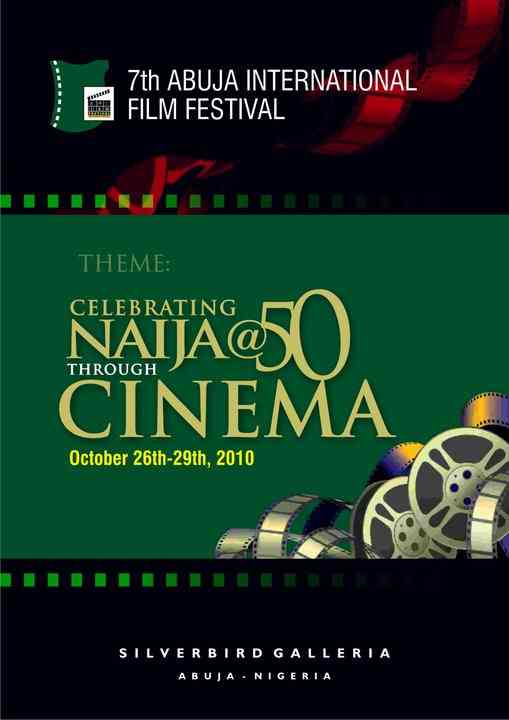


 Silent Souls
Silent Souls
